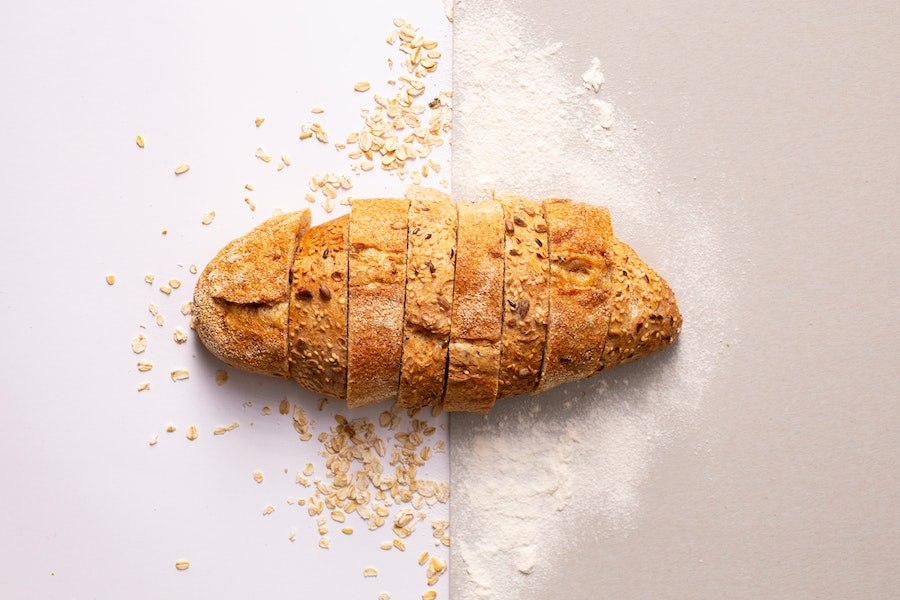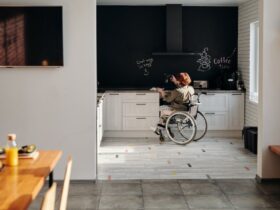Garlic bread is an irresistible side dish that elevates any meal, whether you’re enjoying a cozy pasta dinner, a hearty soup, or simply as a delectable snack. While the allure of garlic bread is undeniable, you might be wondering if you can whip up this savory delight with the regular bread you have on hand. The answer is a resounding yes!
In this culinary adventure, we’ll guide you through the art of transforming plain, everyday bread slices into mouthwatering garlic bread that rivals the best you’ve ever tasted. No need for fancy baguettes or specialty loaves; we’re diving into the magic of making garlic bread with the simplicity of regular bread. Whether you’re a novice in the kitchen or a seasoned cook looking for a quick and satisfying recipe, join us on this delicious journey as we unlock the secrets to creating garlic bread perfection with the humblest of ingredients. Get ready to unleash a burst of garlic-infused, buttery goodness with every bite!
How to Make Garlic Bread with Regular Bread
Making garlic bread with regular bread is a quick and easy way to enjoy this delicious side dish. You can make it as simple or as elaborate as you like, depending on your available ingredients and preferences. Here’s a straightforward recipe:
Ingredients:
- 1 loaf of regular bread (white, whole-grain, or any other type of your choice)
- 1/2 cup (1 stick) unsalted butter, softened
- 4-6 cloves of garlic, minced (adjust to taste)
- 1 teaspoon of dried parsley flakes (optional)
- 1/2 teaspoon salt (adjust to taste)
- 1/4 teaspoon ground black pepper (optional)
- Grated Parmesan cheese (optional)
Tools Needed:
- Oven
- Baking sheet
- Aluminum foil
- Mixing bowl
- Knife
- Cutting board
- Measuring spoons
- Spatula or brush
Instructions:
- Preheat Oven: Preheat your oven to 375°F (190°C).
- Prepare the Garlic Butter: In a mixing bowl, combine the softened butter, minced garlic, salt, and dried parsley flakes. If you’d like, you can also add a dash of pepper or other spices you enjoy. Mix until the ingredients are well incorporated.
- Slice the Bread: Using a serrated knife, slice the loaf of bread into 3/4-inch to 1-inch thick slices, making sure not to cut all the way through; leave about a 1/2 inch uncut at the bottom to hold the loaf together.
- Apply the Garlic Butter: Use a knife or spatula to spread the garlic butter mixture between the slices of bread. Make sure to coat both sides of each slice evenly.
- Optional Cheese: If you like, you can also sprinkle some grated Parmesan cheese between the slices or on top for extra flavor.
- Wrap and Bake: Wrap the prepared loaf of bread in aluminum foil, making sure it is fully enclosed.
- Bake: Place the wrapped bread on a baking sheet and bake for 15 minutes.
- Unwrap and Broil: Carefully open the foil to expose the top of the bread. Switch your oven to the broil setting and broil for 3-5 minutes, or until the top becomes golden and a bit crispy. Watch carefully to avoid burning.
- Cool and Serve: Remove the bread from the oven and allow it to cool for a couple of minutes before serving.
- Optional: You can also garnish with some additional parsley or a sprinkle of Parmesan cheese before serving.
Enjoy your homemade garlic bread made with regular bread! It’s perfect for pairing with pasta dishes, soups, or even as a tasty snack on its own.
How Do You Prepare the Garlic Butter Mixture?
To prepare the garlic butter mixture, you’ll need a few simple ingredients: unsalted butter, minced garlic, fresh parsley, salt, and optional additions like a dash of lemon juice or a sprinkle of red pepper flakes for some heat. Start by softening the butter either by leaving it out at room temperature for a few hours or by using the microwave for short 10-15 second bursts, stirring in between, until it reaches a smooth, easily spreadable consistency.
Once the butter is softened, finely mince your garlic cloves and chop your parsley. The quantity may vary depending on your recipe, but a general rule of thumb is to use about 2-4 cloves of garlic and 2-3 tablespoons of chopped parsley for every stick (1/2 cup) of butter. Add these to the softened butter in a mixing bowl.
Next, season the mixture with salt to taste. If you’re using unsalted butter, you might need around 1/4 to 1/2 teaspoon of salt, or more depending on your preference. For added complexity, you can also include a dash of lemon juice for some tanginess or red pepper flakes for a little kick.
Use a fork or a small spatula to thoroughly mix all the ingredients together until they are well combined, ensuring that the garlic and herbs are evenly distributed throughout the butter. Your garlic butter mixture is now ready to be used in cooking or as a spread. If you’re not using it immediately, you can also store it in the refrigerator in an airtight container for up to a week, or freeze it for longer storage.
How Do You Apply the Garlic Butter and Cook the Bread?
- Slice your desired bread – baguette, ciabatta, or French bread – into even pieces, about 1/2 inch thick, to ensure uniform cooking and butter distribution.
- Using a pastry brush or spoon, generously spread the prepared garlic butter mixture onto one side of each bread slice.
- Preheat your oven to around 350°F (175°C) and place the buttered bread slices directly on the oven rack or a baking sheet.
- Bake the bread for approximately 10-15 minutes or until it turns golden brown and crispy around the edges, giving it a delightful garlic-infused aroma.
- Keep a close eye on the bread to prevent burning, and flip the slices halfway through the cooking time to ensure even browning.
- Once the garlic bread is crispy and golden, remove it from the oven and let it cool slightly before serving. Enjoy your flavorful, buttery garlic bread as a side or appetizer.
Conclusion
In this journey from regular bread to delectable garlic bread, we’ve learned that simplicity can be incredibly satisfying. You don’t need gourmet ingredients or complicated steps to enjoy this classic side dish at its finest. The magic lies in how a few everyday items can come together to create something extraordinary. Homemade garlic bread with regular bread is a testament to the joy of home cooking and the delicious rewards it brings. So, the next time you want to enhance your meal or simply indulge in a tasty snack, remember this straightforward recipe. It’s an easy way to add a touch of culinary delight to your life, and sharing it with loved ones is a treat in itself.
Now, armed with this knowledge, go ahead and create your garlic bread masterpiece. Experiment, have fun, and relish the warmth and flavor of freshly baked garlic bread. Enjoy!
FAQs
Can I use any type of bread for making garlic bread?
Absolutely! While traditional garlic bread often uses baguettes or Italian bread, you can use any type of bread you prefer or have on hand, including regular sliced bread. Just ensure it’s fresh and not stale for the best results.
Can I make garlic bread in advance and reheat it later?
Yes, you can prepare garlic bread in advance and reheat it when needed. To do this, wrap the garlic bread slices in aluminum foil and store them in the refrigerator. When you’re ready to enjoy them, bake in a preheated oven at 350°F (175°C) for about 10 minutes or until heated through.
Can I customize the flavors of my garlic bread?
Absolutely! Garlic bread is versatile, and you can customize it to your liking. Experiment with different herbs like rosemary or thyme, add grated Parmesan cheese for extra richness or even sprinkle a bit of shredded mozzarella for a cheesy twist. Adjust the seasonings to suit your taste and get creative with your garlic bread variations.




















Leave a Reply